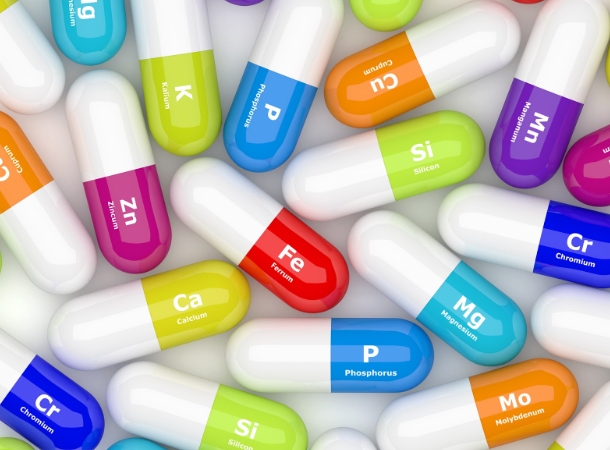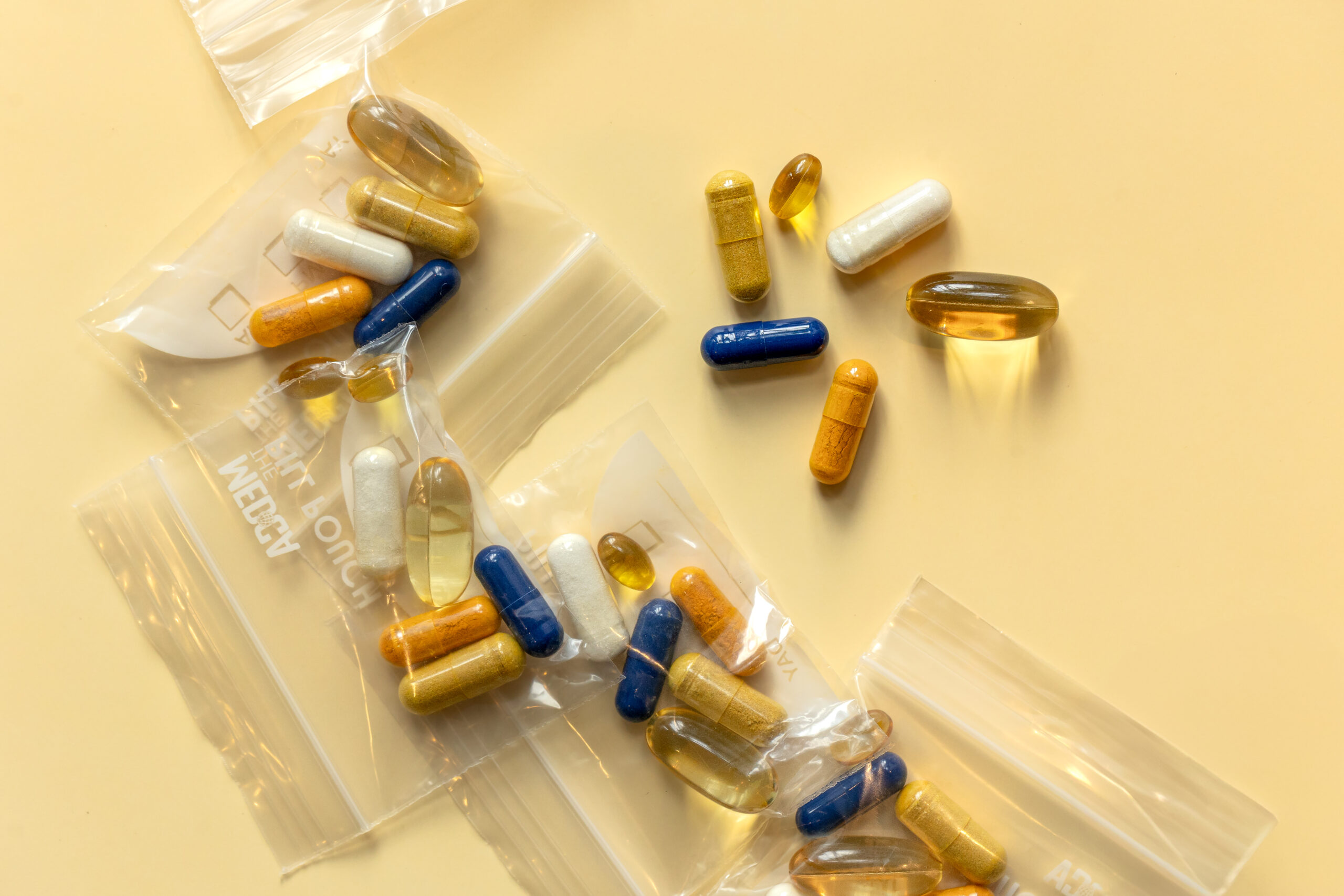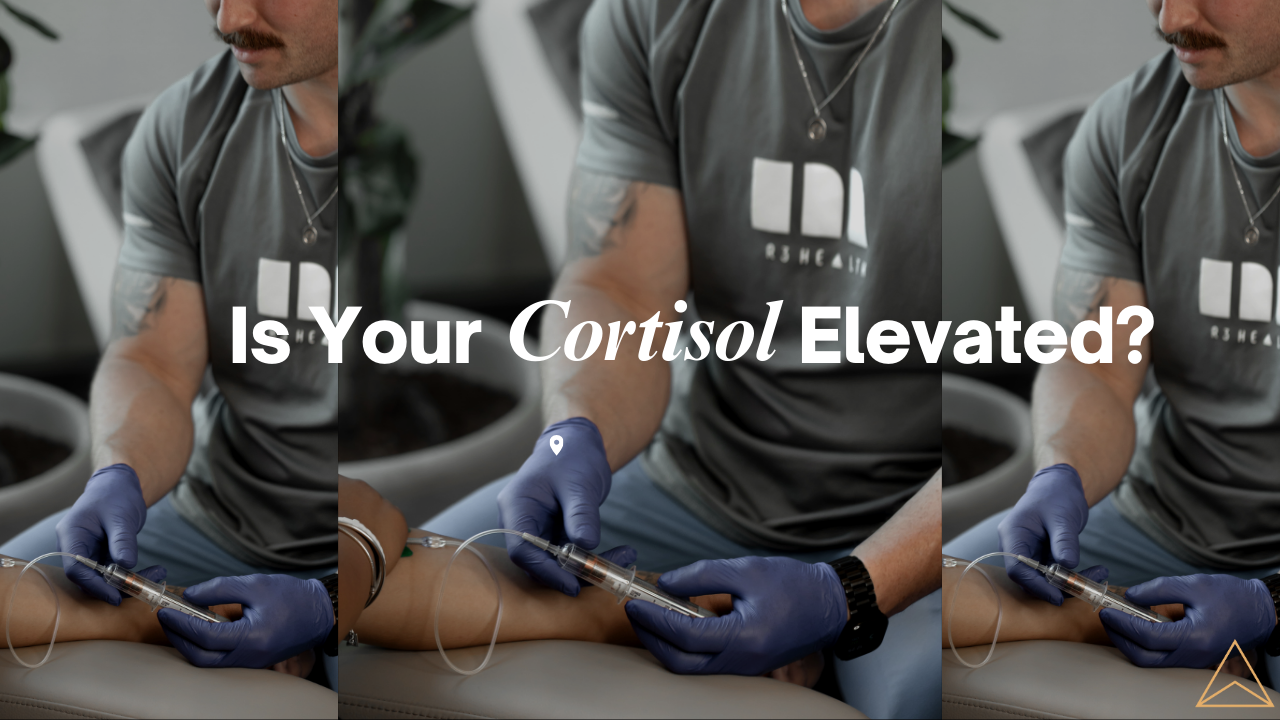We’ve all heard of and, for the most part, know why the common vitamins and minerals such as calcium and vitamin C are so important for our health. With that said, many other vital micronutrients such as phosphorus, chromium, and vitamins E and K are not commonly known in regard to their powerful benefits. There’s a reason they’re on the ingredient list in your Multivitamin that you take every day or found in the very food you consume, so let’s see why.
Phosphorus is a mineral that serves many roles in the human body. Phosphorus makes up the structural component of cell membranes, DNA, RNA, bones, and teeth. It also aids with energy production and keeps the body’s acid-base regulation within normal balance. With that said, every cell in the body requires phosphorus in the form of phosphate in order to carry out normal and efficient function. For all adults, it’s recommended to have at least 700 milligrams of phosphorus per day. Phosphorus is predominately found in fish such as salmon and halibut, dairy products such as yogurt and milk, and other animal products such as turkey, chicken, and beef. It’s important to note that phosphorus from animal sources is better absorbed in the human body compared to plant-based sources such as lentils, almonds, and peanuts.
Chromium is a trace mineral that plays an important role in blood sugar control as it aids with the effects insulin has on target tissues. When we consume a meal that contains carbohydrates, the carbohydrates break down into glucose which signals the pancreas to release insulin in order to properly transport glucose into our cells for energy. Chromium is stimulated to enter those same cells by insulin receptors. Once in the cell, chromium plays a role in a few physiological mechanisms that enhance insulin activity, which is highly beneficial for those who have insulin resistance and diabetes. Since it is a trace mineral, we only need chromium in smaller amounts. For men 19-50 years of age, it’s recommended to have 35 micrograms per day, for women of the same age bracket, it’s recommended to have 25 micrograms per day, for men 51+ years of age, it’s recommended to have 30 micrograms per day, and lastly, for women of the same age bracket, it’s recommended to have 20 micrograms per day. Chromium can be found in whole grain products, beef, poultry, fish, and in vegetables such as broccoli. With that said, consuming a well-balanced diet will ensure you that you got your chromium covered.
Vitamin E is a term that refers to a family of eight different fat-soluble compounds such as alpha- and beta-tocopherol. Alpha-tocopherol is the most active compound within the vitamin E family, which has many important functions. Alpha-tocopherol is a powerful antioxidant which helps to prevent free radicals from multiplying within our cell membranes therefore having many protective properties. What’s more, alpha-tocopherol also aids with enhancing cell-mediated immunity, which means it assists with strengthening immune function. It’s recommended for all adults to have at least 15 milligrams per day; however, studies have shown that more than 90% of American adults do not meet this recommendation, which puts us at a disadvantage in regard to reaping all of the wonderful benefits alpha-tocopherol offers for us. Synthetic vitamin E found in supplements and fortified food is less bioavailable compared to the naturally occurring alpha-tocopherol found in foods such as hazelnuts, sunflower seeds, almonds, peanuts, avocados, and olive oil.
Vitamin K is a fat-soluble vitamin found in different forms; however, naturally occurring forms of vitamin K include vitamin K1 (AKA “phylloquinone”) and K2 (AKA “menaquinones”). Vitamin K1 is produced by plants, meaning, it’s mainly found in our diets. Vitamin K2 is produced by our gut microbiota and is also found in fermented food as well as some animal-based sources. Vitamin K in general has many crucial and impactful benefits in the human body including assisting with the clotting of our blood, enhancing bone calcification by increasing the calcium-binding capacity of bone proteins thus promoting bone health, and also aids with preventing the calcification of our blood vessels, which can otherwise lead to coronary heart disease. For adult men, it’s recommended to have 120 micrograms per day and for adult women, it’s recommended to have 90 micrograms per day. Dietary sources of vitamin K1 are leafy green vegetables such as kale, swiss chard, and spinach as well as plant oils such as soybean and canola oils. The bioavailability of vitamin K1 is higher in oils and in supplementation when compared to leafy greens. Vitamin K2 is primarily produced by the gut microbiota, but it’s also found in certain fermented food such as natto (fermented soybeans) and in animal liver. When consuming vitamin K whether it be from dietary or supplemental sources, it’s recommended to pair it with a fat source such as avocado, nuts, seeds, and/or plant oils for optimal absorption. It’s important to note that if you take anticoagulant medication such as Warfarin (AKA Coumadin), consuming large quantities of vitamin K in any form can interfere with the mechanism of the medication and should be avoided.
Like I always say, consuming a well-balanced diet with a variety of different fruits, vegetables, whole grains, lean protein, plant-based protein, and heart-healthy fats is the best way to ensure that you are receiving vital vitamins and minerals that are so important for overall health… and now we know why!
Sting and the Police weren’t totally accurate after all: Roxanne does have to put on the red light—if she wants to reap the benefits of this colorful wellness treatment! At R3 Health, we’ve become quite enamored wi
We’ve all heard of and, for the most part, know why the common vitamins and minerals such as calcium and vitamin C are so important for our health. With that said, many other vital micronutrients such as phosphorus, chromium, and vitamins E and K are not commonly known in regard to their powerful benefits. There’s a reason they’re on the ingredient list in your Multivitamin that you take every day or found in the very food you consume, so let’s see why.
Phosphorus is a mineral that serves many roles in the human body. Phosphorus makes up the structural component of cell membranes, DNA, RNA, bones, and teeth. It also aids with energy production and keeps the body’s acid-base regulation within normal balance. With that said, every cell in the body requires phosphorus in the form of phosphate in order to carry out normal and efficient function. For all adults, it’s recommended to have at least 700 milligrams of phosphorus per day. Phosphorus is predominately found in fish such as salmon and halibut, dairy products such as yogurt and milk, and other animal products such as turkey, chicken, and beef. It’s important to note that phosphorus from animal sources is better absorbed in the human body compared to plant-based sources such as lentils, almonds, and peanuts.
Chromium is a trace mineral that plays an important role in blood sugar control as it aids with the effects insulin has on target tissues. When we consume a meal that contains carbohydrates, the carbohydrates break down into glucose which signals the pancreas to release insulin in order to properly transport glucose into our cells for energy. Chromium is stimulated to enter those same cells by insulin receptors. Once in the cell, chromium plays a role in a few physiological mechanisms that enhance insulin activity, which is highly beneficial for those who have insulin resistance and diabetes. Since it is a trace mineral, we only need chromium in smaller amounts. For men 19-50 years of age, it’s recommended to have 35 micrograms per day, for women of the same age bracket, it’s recommended to have 25 micrograms per day, for men 51+ years of age, it’s recommended to have 30 micrograms per day, and lastly, for women of the same age bracket, it’s recommended to have 20 micrograms per day. Chromium can be found in whole grain products, beef, poultry, fish, and in vegetables such as broccoli. With that said, consuming a well-balanced diet will ensure you that you got your chromium covered.
Vitamin E is a term that refers to a family of eight different fat-soluble compounds such as alpha- and beta-tocopherol. Alpha-tocopherol is the most active compound within the vitamin E family, which has many important functions. Alpha-tocopherol is a powerful antioxidant which helps to prevent free radicals from multiplying within our cell membranes therefore having many protective properties. What’s more, alpha-tocopherol also aids with enhancing cell-mediated immunity, which means it assists with strengthening immune function. It’s recommended for all adults to have at least 15 milligrams per day; however, studies have shown that more than 90% of American adults do not meet this recommendation, which puts us at a disadvantage in regard to reaping all of the wonderful benefits alpha-tocopherol offers for us. Synthetic vitamin E found in supplements and fortified food is less bioavailable compared to the naturally occurring alpha-tocopherol found in foods such as hazelnuts, sunflower seeds, almonds, peanuts, avocados, and olive oil.
Vitamin K is a fat-soluble vitamin found in different forms; however, naturally occurring forms of vitamin K include vitamin K1 (AKA “phylloquinone”) and K2 (AKA “menaquinones”). Vitamin K1 is produced by plants, meaning, it’s mainly found in our diets. Vitamin K2 is produced by our gut microbiota and is also found in fermented food as well as some animal-based sources. Vitamin K in general has many crucial and impactful benefits in the human body including assisting with the clotting of our blood, enhancing bone calcification by increasing the calcium-binding capacity of bone proteins thus promoting bone health, and also aids with preventing the calcification of our blood vessels, which can otherwise lead to coronary heart disease. For adult men, it’s recommended to have 120 micrograms per day and for adult women, it’s recommended to have 90 micrograms per day. Dietary sources of vitamin K1 are leafy green vegetables such as kale, swiss chard, and spinach as well as plant oils such as soybean and canola oils. The bioavailability of vitamin K1 is higher in oils and in supplementation when compared to leafy greens. Vitamin K2 is primarily produced by the gut microbiota, but it’s also found in certain fermented food such as natto (fermented soybeans) and in animal liver. When consuming vitamin K whether it be from dietary or supplemental sources, it’s recommended to pair it with a fat source such as avocado, nuts, seeds, and/or plant oils for optimal absorption. It’s important to note that if you take anticoagulant medication such as Warfarin (AKA Coumadin), consuming large quantities of vitamin K in any form can interfere with the mechanism of the medication and should be avoided.
Like I always say, consuming a well-balanced diet with a variety of different fruits, vegetables, whole grains, lean protein, plant-based protein, and heart-healthy fats is the best way to ensure that you are receiving vital vitamins and minerals that are so important for overall health… and now we know why!
th LightStim Red Light Therapy. Let’s see why!
Red light therapy uses low-level wavelengths of colored light as an effective treatment for a wide variety of skin conditions. You may have already heard of this advancement before under a different name, such as:
- infrared light therapy
- photobiomodulation (PBM)
- low-level light therapy (LLLT)
- soft laser therapy
- cold laser therapy
- biostimulation
- photonic stimulation
- low-power laser therapy (LPLT)
It feels gentle and warm—like a day at the beach—but down at the cellular level, it’s working to produce a biochemical response in the mitochondria. That’s the powerhouse of the cell where it creates energy.
By boosting those mitochondria’s efficiency, cells can produce more adenosine triphosphate. That’s a molecule common in all living things responsible for carrying energy throughout the body. With more ATP, cells can function with better efficiency to repair damages and rejuvenate themselves.
This process is mildly similar to more popular laser treatments, except for the fact that Intense Pulsed Light (IPL) sessions cause damage to superficial layers of the epidermis, inducing tissue repair and regeneration. RLT, on the other hand, skips the damaging part of laser therapies and instead goes right to stimulating the healing aspect by penetrating approximately 5mm below the skin surface.
Are you wondering how experts discovered the benefits of RLT? That particular fact is a little out of this world! In the early 1990s, scientists working on the International Space Station program performed experiments while in orbit using plants and red light-emitting diodes. They noticed that these particular light waves were effective at promoting growth and photosynthesis in their subjects.
These scientists wondered if they could harness this tech to combat many common issues caused by weightlessness during prolonged space travel like bone density problems, muscle atrophy, and slow wound healing.
Since then, there have been thousands of laboratory experiments and clinical studies done to suss out the many benefits of these powerful red lightwaves, including:
- repaired and rebuilt collagen, elastin, and other proteins
- reduced pain and inflammation
- increased blood circulation
- improved oxygenation
- enhanced lymphatic flow
- shrunken pores, wrinkles, fine lines, and scars
- accelerated healing
- extended lifespan for Botox and other fillers
- toned skin and a radiantly glowing complexion
- optimized cellular functions
- acne relief
- and more!
The RLT process is quite similar to using a tanning bed! Patients simply relax for 40 minutes in an LED light bed with an optional face panel, and the red waves get to work. Why the face panel? Because we’ve found it’s incredibly helpful in speeding up the healing process after facials—especially when paired with microneedling!
Some patients report experiencing results after only a single treatment, while other conditions benefit from a series of sessions for a better outcome. For this reason, we offer membership rates for our patients here at R3 Health for those that want to come in multiple times a month for that warm, relaxing red glow.





